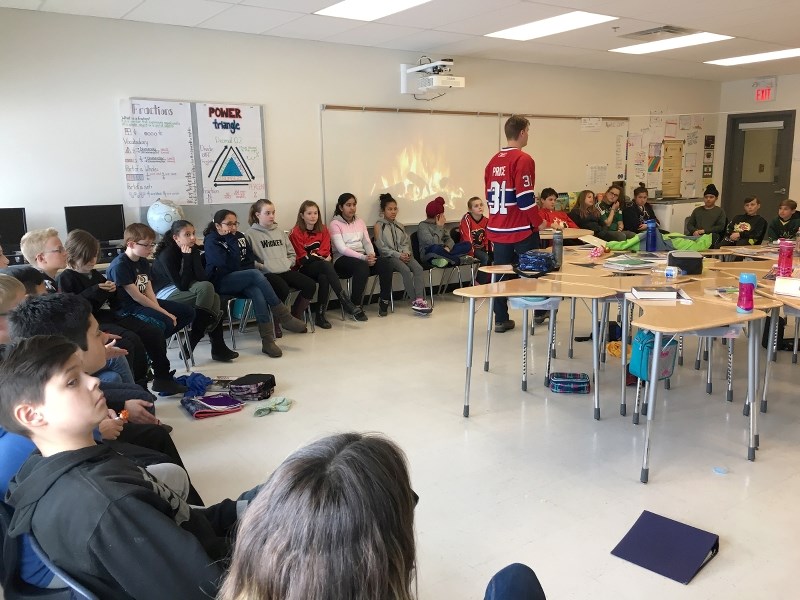Grade 6 students at C.W. Perry School used a $500 Educational Partnership Foundation grant to give back to their community while learning about different forms of government.
After teachers Jolie Nelson and Jeremie Anderson learned about the grant – intended to have students design and lead a project that would impact their community in a positive way – they gave their students a hands-on lesson about the Iroquois Confederacy and its consensus decision-making process.
“In the Iroquois Confederacy, there are six nations, so we divided our students between both of our classes into the six nations and they had to use the consensus decision-making process to come up with ideas they thought would benefit our community and how they would spend the money,” Nelson said.
According to Anderson, the school tries to play an active role within its home community of Sagewood.
“(This project) was a little bit of a thank you because we walk their paths, we walk right in front of their houses, we’re always around them,” he said.
The students quickly zeroed in on ideas focused on beautifying the neighbourhood with plants, and generated suggestions that were then discussed and decided upon by the class.
“Some of the ideas were to have a greenhouse or bird feeders,” Nelson said. “When they came down to creating a budget and how they were going to afford it, they determined it wasn’t going to be possible.”
Students Mira Ghuman and Nolan Heikamp said they found the learning experience to be an especially challenging exercise.
“It was a little bit difficult because not everybody agreed,” Heikamp said. “It took a while to actually start getting ideas flowing and for everybody to start agreeing.”
“We found out that their decision-making process takes a lot longer than it takes with our decision-making process,” Ghuman said. “With them, everyone has to come to a consensus, otherwise they’ll have to restart the whole process over.”
The students eventually arrived at a consensus decision to purchase flower seeds and distribute them to houses around the school. The students handed out the seeds the afternoon of May 11.
“We divvied up all the seeds into different groups and we had a note attached to each seed explaining what we were doing, why we were handing them out, where they were from,” Nelson said.
Some homeowners were outside, he said, giving students the opportunity to share information about the project with their neighbours. She said the class has received positive feedback from the community, including some thank-you notes.
“Everyone we spoke to has been really excited and really grateful for the seeds we handed out,” she said.
Nelson and Anderson said hands-on teaching can be the most effective education tool, as students often retain those lessons better. Nelson said the Grade 6 curriculum – focused solely on different types of governments – can be dull for students, and the teachers hoped this project would make it a little more exciting. Anderson added their goal as teachers was to make the lessons authentic for the students.
“Once we make it real and make it visible, that’s when they’re going to gain the most out of the project,” he said.



